Given the problems that surfaced with NVIDIA’s 12VHPWR adapters, the safest way to follow is with native PCIe 12+4 cables, which come with ATX v3.0 and PCIe 5.0 ready PSUs. The Thermaltake Toughpower GF3 1000 belongs to the new PSU generation and it is equipped with a 600W rated 12VHPWR connector, so it won’t have a problem powering a power-hungry RTX 4090 and a strong CPU, which won’t bottleneck it at high resolutions.
I have already reviewed the Toughpower GF3 1200, GF3 850, and GF3 750, so it was high time to look at the GF3 1000. Like all other GF3 models, the 1000W member is ATX v3.0 and PCIe 5.0 ready, meaning that you won’t have to use 12VHPWR adapters with NVIDIA’s newest GPUs since a native 12+4 pin connector is provided, with a 600W rating. According to the ATX spec, a 1000W PSU should come with a 450W 12VHPWR connector, but no one has followed this rule so far. All brands and manufacturers provide 600W cables because it is easier to keep track of their inventories with only a single type of 12+4 pin connector. I can feel that. Imagine an error in the supply, bundling a lower rating cable, leading to performance issues and lots of RMAs. The worst thing that can happen if you have a 1000W or lower capacity PSU with a 12VHPWR connector informing the GPU that l the way up to 600W is to have a system restart under an extremely high load. This will be inconvenient,t it won’t damage the system or the PSU. It will be a warning that you need to lower the GPU power limit. To avoid such inconvenient situations and restarts under high loads, the ATX spec has equipped the 12VHPWR connector with Sense 0 and 1, which inform the GPU of the PSU’s power capabilities according to their settings.
The GF3 1000 uses a fully modular cable design, and thanks to its normal dimensions, with 160mm depth, it accommodates a large enough FDB fan provided by Hong Hua. Nevertheless, its noise output is pretty high, and the Cybenetics Standard+ noise rating shows that, since it means within 35-40 dBA average noise output, which is not low for a Gold efficiency PSU, even with 1000W max power. The GF3 1000 is also certified as Gold by Cybenetics and 80 PLUS. Lastly. with a 200-dollar price tag, you cannot call it affordable, but ATX v3.0 and PCIe 5.0 compatibility don’t come cheap. If you have already spent $2000 or more to get an RTX 4090, you should not cheap out on the PSU!
- Manufacturer (OEM): CWT
- Max Power: 1000W
- Cybenetics Efficiency: [115V] Gold (87-89%)
- 80 Plus Efficiency: Gold
- Noise: Cybenetics Standard+ (35 – 40 dBA)
- Compliance: ATX12V v3.0, EPS 2.92
- Alternative Low Power Mode support: Yes
- Power 12V: 1000W
- Power 5V + 3.3V: 120W
- Power 5VSB: 15W
- Cooling: 135 mm Fluid Dynamic Bearing Fan (HA13525H12SF-Z)
- Semi-Passive Operation: Yes (Selectable)
- Modular Design: Yes (Fully)
- High Power Connectors: 2x EPS (2x cables), 4x PCIe 6+2 pin (2x cables), 1x PCIe 12+4 pin (600W)
- Peripheral Connectors: 12x SATA (3x cables), 4x 4-pin Molex (single cable)
- ATX/EPS Cable Length: 600/700mm
- Distance between SATA/4-pin Molex connectors: 150mm
- In-cable capacitors: No
- Dimensions (W x H x D): 150 mm x 85 mm x 160 mm
- Weight: 1.75 kg (3.86 lb)
- Warranty: 10 years
Box & Bundle
The box offers good protection, and the PSU is also protected by a cloth, which is a nice touch. All modular cables are in a plastic bag, which you can use to store unused ones. The rest of the bundle includes some leaflets, fixing bolts, and some zip ties for cable management.
Product Photos
The PSU follows the typical Thermaltake PSU design, with small perforations on its inlet (fan grille) and exhaust. TT needs to revise the exterior design at some point to allow for better airflow and lower noise output.
Cables
| Modular Cables | ||||
| Description | Cable Count | Connector Count (Total) | Gauge | In Cable Capacitors |
|---|---|---|---|---|
| ATX connector 20+4 pin (600mm) | 1 | 1 | 16AWG | No |
| 4+4 pin EPS12V (700mm) | 1 | 1 | 16AWG | No |
| 8-pin EPS12V (700mm) | 1 | 1 | 16AWG | No |
| 6+2 pin PCIe (500mm+150mm) | 2 | 4 | 16-18AWG | No |
| 12+4 pin PCIe (600mm) (600W) | 1 | 1 | 16-24AWG | No |
| SATA (500mm+150mm+150mm+150mm) | 3 | 12 | 18AWG | No |
| 4-pin Molex (500mm+150mm+150mm+150mm) | 1 | 4 | 18AWG | No |
| FDD Adapter (100mm) | 1 | 1 | 22AWG | No |
| AC Power Cord (1400 mm) – C13 coupler | 1 | 1 | 18AWG | – |
The cables are long, and there is a 12+4 pin connector, but there are not many PCIe cables for the previous generation graphics cards or the upcoming AMD ones, which won’t use 12VHPWR connectors. It will be crazy, but we will see it, 12VHPWR to 6+2 PCIe connectors, because it is not safe to use piggy-tail PCIe cables, with both 6+2 PCIe connectors utilized, in power-hungry GPUs. Lastly, it is nice to see an adequate distance between all peripheral connectors.
Protection Features
|
OCP |
12V: 104.8 A (125.51%), 12.044 V |
|
OPP |
1262.97 W (126.30%) |
|
OTP |
✓ (147 °C @ 12V heatsink) |
|
SCP |
12V to Earth: ✓ |
|
PWR_OK |
Accurate but lower than 16 ms |
|
NLO |
✓ |
|
SIP |
Surge: MOV |
OCP at 12V and OPP are correctly set. This is not the case for the minor rails with high OCP triggering points, especially the 3.3V rail. Moreover, the power ok signal is accurate but lower than 16ms.
Part Analysis
| General Data | – |
| Manufacturer (OEM) | CWT |
| Platform | CSZ |
| PCB Type | Double Sided |
| Primary Side | – |
| Transient Filter | 4x Y caps, 2x X caps, 2x CM chokes, 1x MOV |
| Inrush Protection | 1x NTC Thermistor SCK-207R0 (7 Ohm) & Relay |
| Bridge Rectifier(s) |
2x Yangjie Electronic GBU1506 (600V, 15A @ 100°C)
|
| APFC MOSFETs |
2x GP36S60YERD & 1x Sync Power SPN5003 FET (for reduced no-load consumption)
|
| APFC Boost Diode |
1x On Semiconductor FFSP1065B (650V, 10A @ 139°C)
|
| Bulk Cap(s) |
1x Nippon Chemi-Con (420V, 820uF, 2,000h @ 105°C, KHE)
|
| Main Switchers |
2x Infineon IPA60R125P6 (600V, 19A @ 100°C, Rds(on): 0.125Ohm)
|
| APFC Controller |
Champion CM6500UNX
|
| Resonant Controller | Champion CU6901VAC |
| Topology |
Primary side: APFC, Half-Bridge & LLC converter
Secondary side: Synchronous Rectification & DC-DC converters |
| Secondary Side | – |
| +12V MOSFETs | 8x On Semiconductor NTMFS5C430N (40V, 131A @ 100°C, Rds(on): 1.7mOhm) |
| 5V & 3.3V | DC-DC Converters: 2x UBIQ QN3107M6N (30V, 70A @ 100°C, Rds(on): 2.6mOhm) & 2x UBIQ QM3054M6 (30V, 61A @ 100°C, Rds(on): 4.8mOhm) PWM Controller(s): uPI-Semi uP3861P |
| Filtering Capacitors | Electrolytic: 3x Nichicon (2-5,000h @ 105°C, HD), 2x Nichicon (4-10,000h @ 105°C, HE), 2x Nippon Chemi-Con (2-5,000h @ 105°C, KZE), 2x Rubycon (4-10,000h @ 105°C, YXJ), 1x Nippon Chemi-Con (4-10,000h @ 105°C, KY) Polymer: 18x APAQ, 3x Elite, 2x CapXon |
| Supervisor IC | Weltrend WT7502R |
| Fan Controller | Microchip PIC16F1503 |
| Fan Model | Hong Hua HA13525H12SF-Z (135mm, 12V, 0.5A, Fluid Dynamic Bearing Fan) |
| 5VSB Circuit | – |
| Rectifier |
1x PS1045L SBR (45V, 10A)
|
| Standby PWM Controller | On-Bright OB2365T |
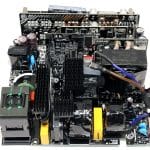
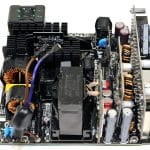

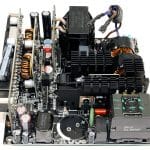

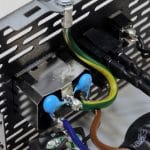
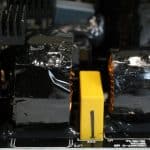
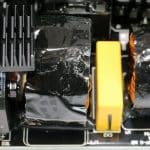
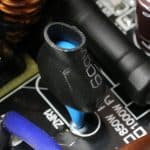
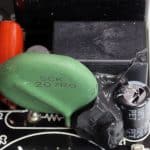
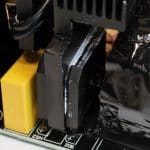
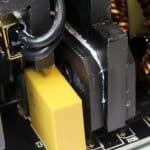
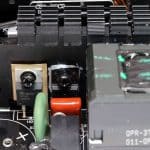
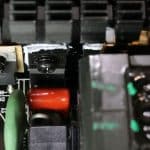
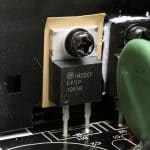

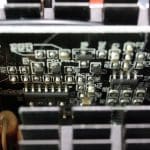
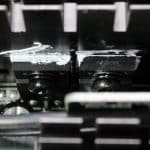
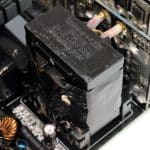

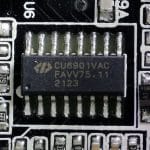
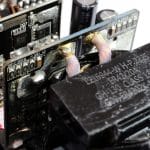
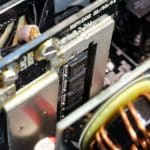
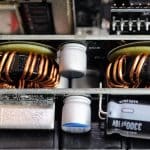

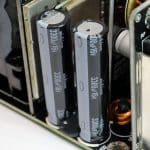
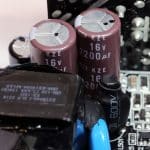
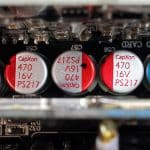
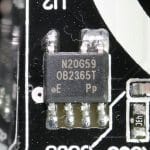
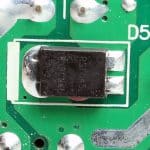
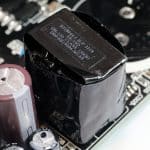
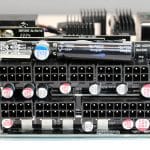

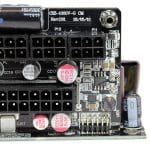
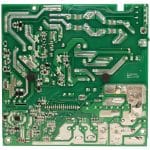
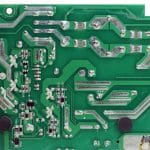
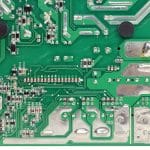
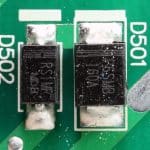
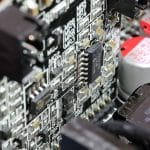
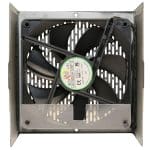

Channel Well Technology (CWT) is the OEM for all GF3 units with up to 1200W max power. The platform’s code name is CSZ, which uses a contemporary design. There are no digital circuits to keep the production cost in control, but analog controllers are fine for Gold efficiency levels. The PCB is large enough to allow for good airflow, but typically, for a CWT design, there are no heatsinks on the secondary side to cool down the 12V FETs, so the fan will have to spin fast at high loads to keep these FETs at normal operating temperatures. At some point, CWT will have to revise this strategy of not using heatsinks on the secondary side to offer lower noise output through more relaxed fan speed profiles.
Soldering quality is good, and the parts that CWT used will outlast the extended ten-year warranty under normal operating conditions. The cooling fan is also by a reliable brand, Hong Hua, and it uses a fluid dynamic bearing which is far more reliable than a plain sleeve bearing. Hong Hua fans combine good quality at reasonable prices, which is why they dominate the PSU market. I remember back in the day when I first saw them during a tear-down, I was wondering whether they would be around in the following years, but eventually, this brand managed to have tight cooperation with several key OEMs, including CWT and Seasonic.
Load Regulation
Load regulation is within 1% on all significant rails, so it is satisfactory.
Ripple Suppression
Ripple suppression is good.
Transient Response
The 12V rail is above 1% in my normal transient response tests. Ideally, it should be within 1%.
Transient Response ATX 3.0 & 12VHPWR Connector Tests
The PSU passed all ATX 3.0 transient response tests successfully. I would like to see the 3.3V rail staying above 3.2V, though.
Hold Up Time
The hold-up time is longer than 17ms, but the power ok signal’s hold-up time doesn’t reach the minimum that the ATX spec requires (16ms).
Timings
The PSU supports Alternative Low Power Modes.
Inrush Current
Inrush current is low at 115V and average at 230V.
Efficiency Normal, Light & Super-Light Loads
Efficiency with normal loads is not high enough to meet the competition. Things turn around with light and super-light loads, where this platform shines.
Average Efficiency 5VSB
The 5VSB rail has high enough efficiency.
Vampire Power
Vampire power is low.
Average Efficiency
The average efficiency is satisfactory for the Gold category’s standards. It would be higher if the platform performed better with normal loads.
Average PF
The APFC converter needs a slight boost with 115V, but it performs well enough with 230V.
Average Noise
Average noise output is high.
Fan Noise & Speed Maps @ 28-32 °C
The load on the minor rails affects noise output, and I use the worst-case scenario for these tests since I load the minor rails fully from the start. Nevertheless, the PSUs noise stays below 20 dBA with up to 540W. The 30 dBA limit is broken with more than 730W. The loud operation starts with more than 940W, where the PSU exceeds 45 dBA noise.
Overall Performance
Although the GF3 1000 doesn’t pose a significant threat to the Corsair RM1000x and the EVGA 1000 G7, it still achieves decent overall performance.
Epilogue
The Thermaltake Toughpower GF3 1000 is an ATX v3.0 and PCIe 5.0 ready power supply, meaning that you won’t have to mess with 12VHPWR adapters to power the new generation NVIDIA graphics cards, so you won’t face any issues like the ones that some users had with the provided adapters. I always advise against using adapters, especially when high-power output is expected. The slightest problem in build quality or an installation error can be proven fatal when 500W or more have to pass through a single cable.
The GF3 1000 doesn’t outperform the performance king in the 1000W category, the Corsair RM1000x, but the latter doesn’t have a native 12VHPWR cable, which you will have to purchase separately from Corsair. The MSI MPEG Ai1000P PCIE5 also registers around 2% higher performance, but it also costs 80 dollars more, at $280, so it is anything else but affordable. The price of the GF3 1000 is also pretty high, at $200, but you should expect higher prices for all ATX v3.0 and PCIe 5.0 ready PSUs.
Buy Corsair RM1000x Buy EVGA 1000 G6
Buy Seasonic GX-1000 Buy Thermaltake GF3 1000W
- Full power at 47°C
- ATX v3.0 and PCIe 5.0 ready
- 12VHPWR connector (600W)
- Decent overall performance
- Quiet operation up to 540W loads (at 28-32°C ambient)
- High build quality
- Correctly set OCP at 12V and OPP
- Within 1% load regulation on the significant rails
- Good ripple suppression
- Highly efficient at light and super-light loads
- Longer than 17ms hold-up time
- Low inrush current with 115V
- High enough PF readings with 230V input
- Low vampire power
- ALPM support
- Fully modular
- Adequate distance (150mm) between the peripheral connectors
- FDB fan
- 10-year warranty
- Efficiency needs a boost with normal loads
- The transient response could be better
- Noisy at high loads
- Only two (piggy-tail) PCIe 6+2 cables
- High OCP on the minor rails
- Lower than 16ms power ok signal hold-up time
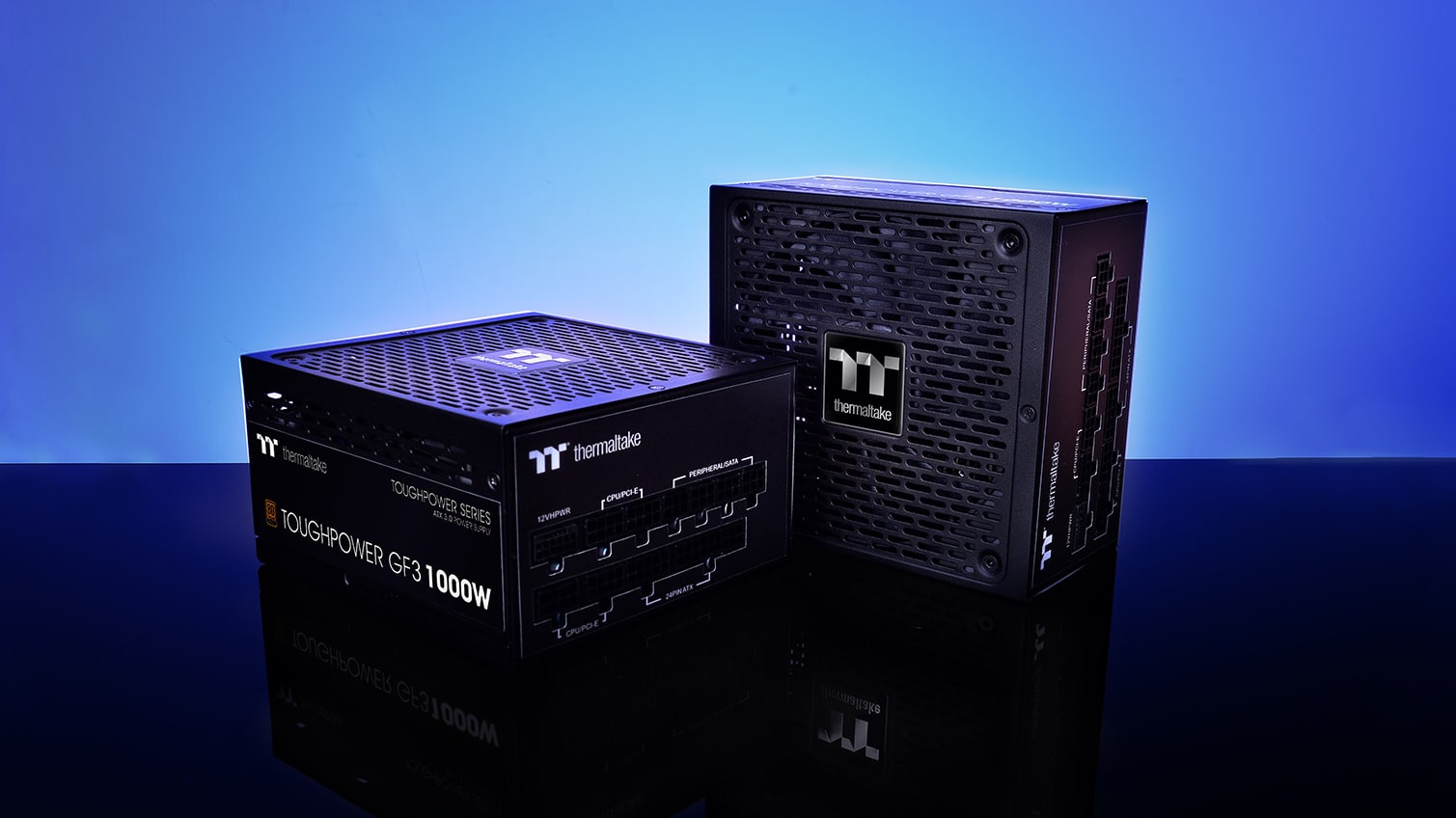
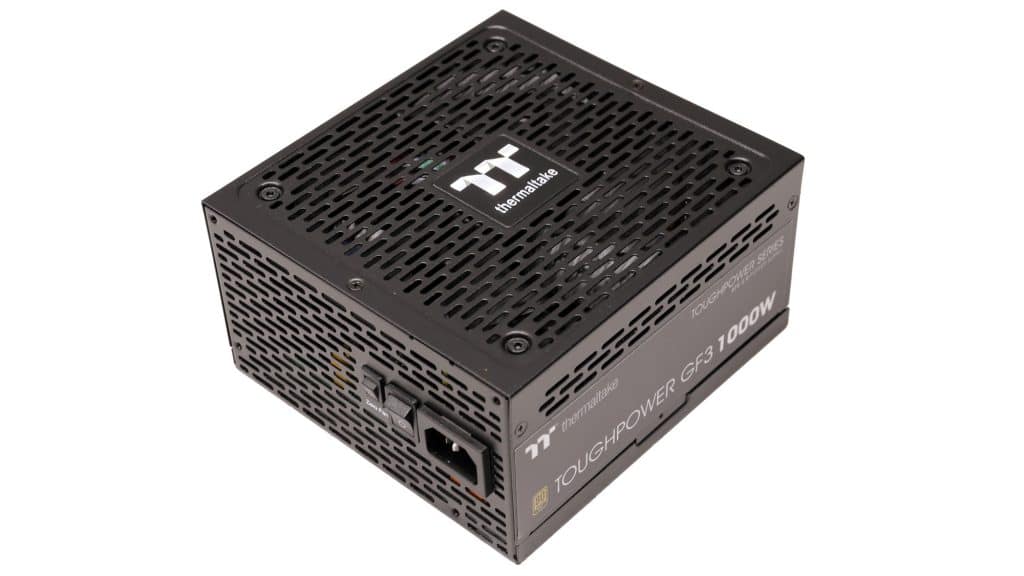

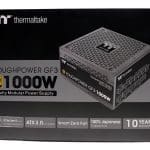
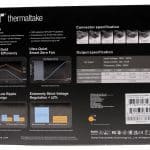
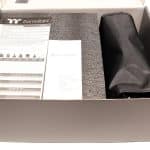
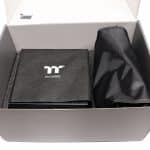

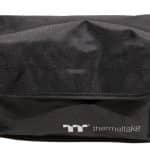
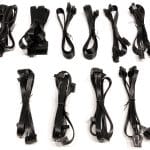
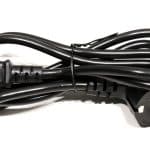
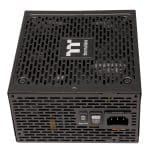
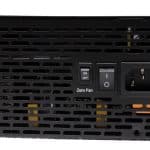
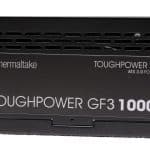
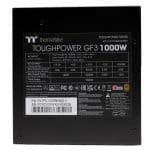

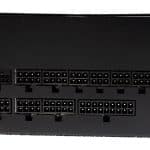
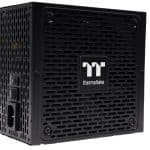

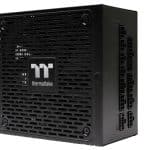
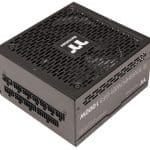

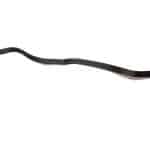
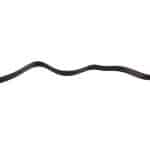
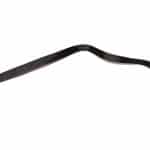
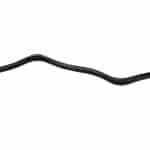
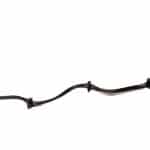
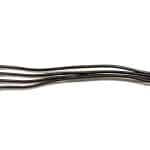
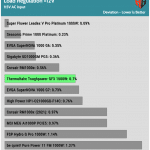
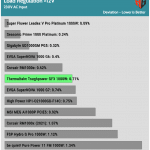
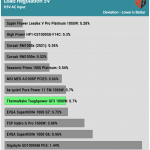
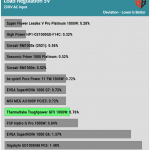
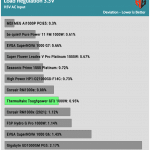
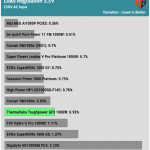
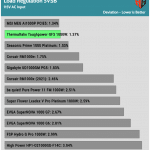
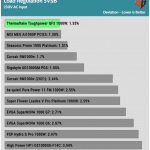
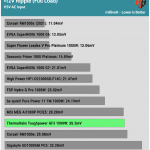
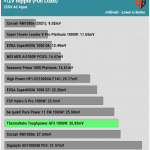
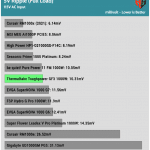
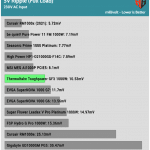
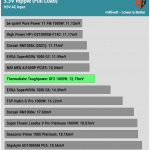
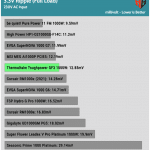
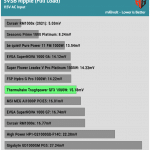


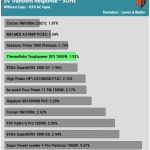
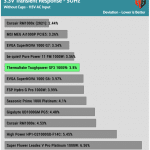
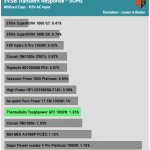
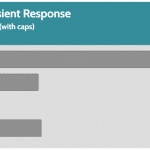
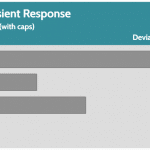

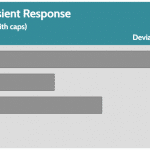


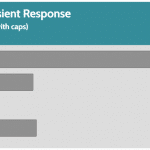
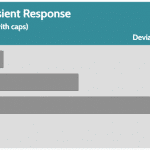
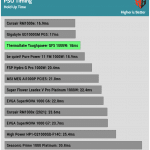
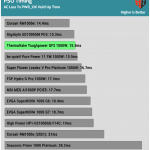
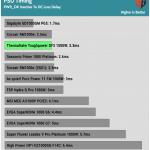
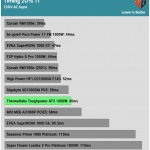
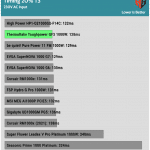
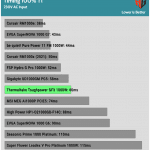
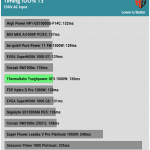
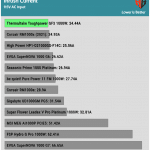
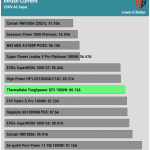
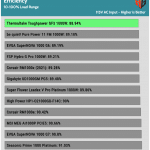
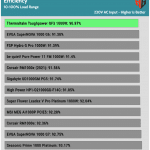
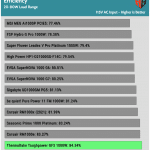
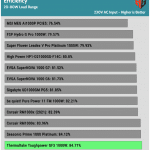
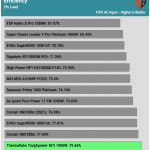
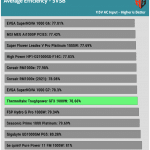
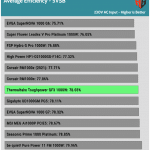
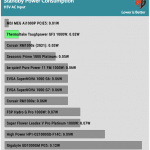
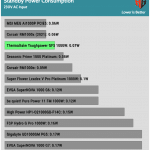
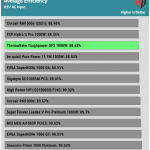
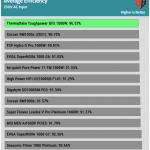
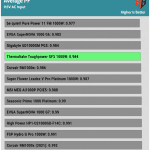
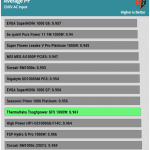
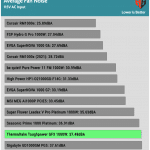


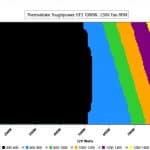
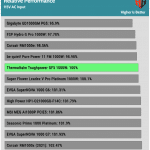
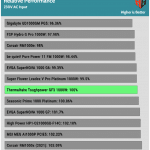
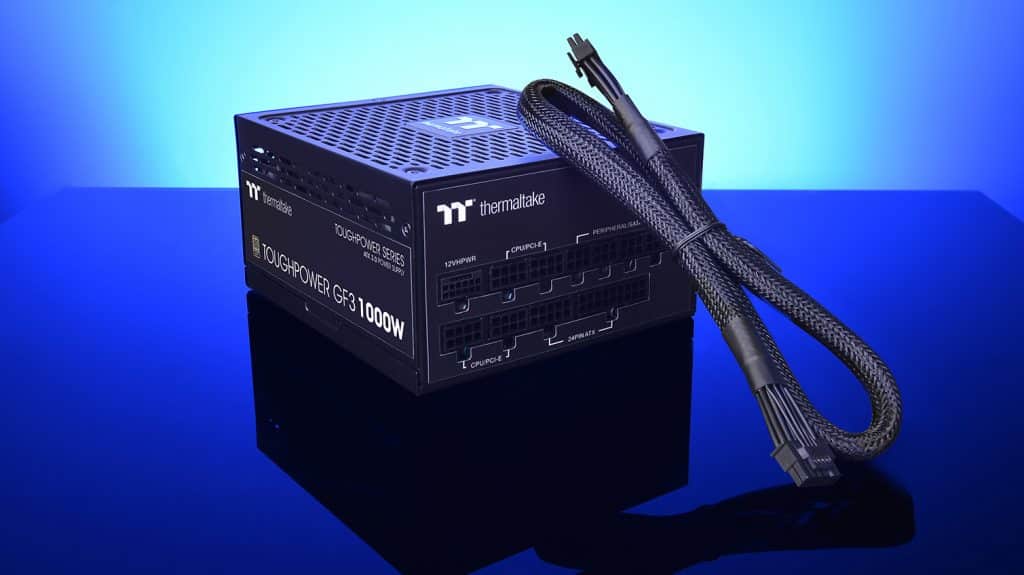
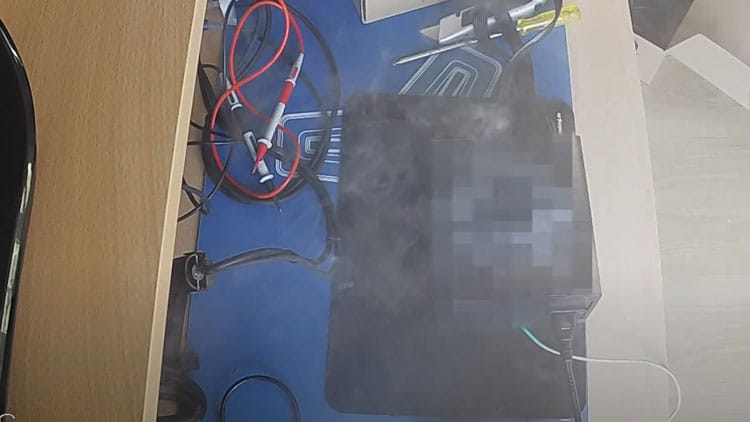
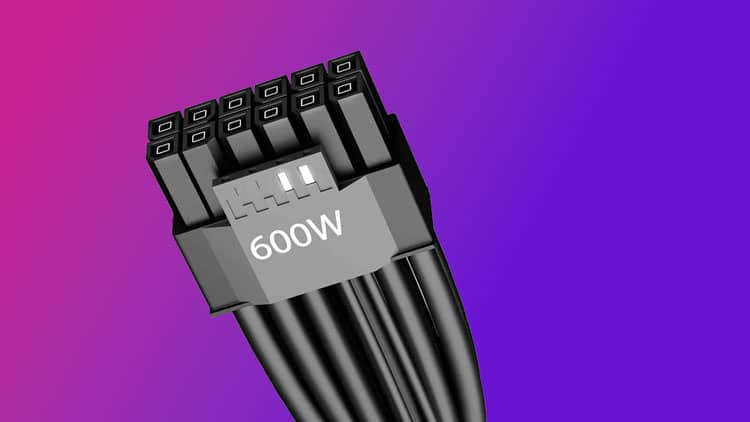
@crmaris: Besides maybe more palatable prices, is there any other benefit to waiting for new ATX v3.0 and PCIe 5.0 ready PSU models? Are there any noticeable improvements such as maybe improved efficiency expected?
Hello, I am a faithful follower of your reviews and I admire your excellent work, so I highly value your opinion, right now I need to buy a new generation of PSU
1000w-1350w, so far I have looked at these: Thermaltake GF3 1350w, Thermaltake Gf3 1000w, FSP Hydro G pro 1000w ax 3.0, MSI MPG A1000G PCIE5 , anyway, if there is a better one, I add it to the list, which of them do you recommend I buy with better quality?
Thank you for your help and excellent work.
a cordial greeting
All these are good, but the MSI is in a higher category, both at price and efficiency (Platinum).
The msi one are now reported to have issue in hk, thr native 12vhpwr power cable still melted even the end user is not using the 4 to 1 adapter, i m from hk and this bring deep concern on me since i bought 4090 and a an atx 3 psu just to be extra careful but still end up to see news like this.
MSI MPG A1000G PCIE5 is listed as gold certified
In the review you say they provide 600w 12vhpwr connector, but it is actually 450w in the specification and on the photo
Yes, in reality, it is 600W. The official specs are not accurate.
how has 600w rating been confirmed, was it by Thermaltake? i have purchased the GF3 1000w and waiting for deliver, but have requested MSI MEG Ai1000P to replace the GF3 as i read spec’s and Thermaltake support confirmed, the 12vhpwr connector was only 450w. the MSI MEG is rated for 600w.
Reply from Thermaltake AU
“Thank you for the enquiry regarding the Toughpower GF3 1000W PSU.
Please kindly note that, the provided PCIe (12+4Pin) 12VHPWR cable for the GF3 1000W PSU can support max power up to 450W.
And 600W 12VHPWR cable is provided with GF3 1200W PSU or higher.
We apologise for any inconvenience caused.
Best Regards,
Thermaltake ANZ – Support”
I measured all PCIe 5.0 on my own, EVERYONE uses 600W connectors to avoid RMAs and BIOS locking on power, on the RTX 4090. Usually, they should provide 450W cables on a 1000W PSU, but nobody does it, including Thermaltake.
My GF3 1000w came with a cable labeled 450w also. How can we tell if it’s really a 600w ?
Hi crmaris,
thanks for your input.
Does it mean, that I need to order a 600w cable and do not use 450w by overclocking?
Hi! For overclocking, you need 600W cable and a card that has the BIOS that allows up to 600W of course.
I have the 1350W and the only small complaints I have, is the length of the new 12V cable (A little short, using a cooler master h500p mesh case) and the fan noise when it ramps up using the inno3D ichill 4090, but not overbearing. I’ve come from a corsair 850W and that was almost silent when running a rtx 3090, so it was a little jarring to hear the fans ramp up at first.
This is among my next reviews, the GF3 1350
Hello, thanks for the review! When will the review for the 1350 watt be dropping? I am interested in purchasing that and would love some insight on it. Thanks!
Yes, the 1350W and 1650W are next!
From what i’ve read in Aris review , i can’t spot anything that could discourage me from buying such a PSU .
The GF3 seems as a great line of PSUs and as a nice bonus , it’s also compliant with the new standards.
This kind of performance indicates that it’s time for Corsair to also move to ATX v3.0 and PCIe 5.0-standards PSUs.
Thermaltake is on the right path!